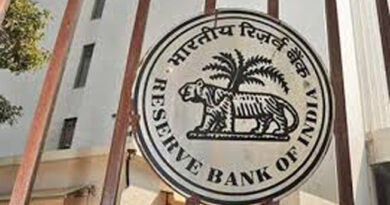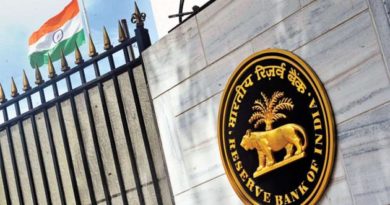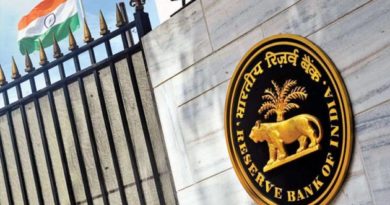Future of banking- Blockchain Technology
Abstract
Blockchain banking is a new technology in India, but it’s gaining traction due to its worldwide success in finance and other sectors. The Indian government recognizes its potential and is investing in research through the Centre of Excellence in Blockchain Technology. However, challenges like regulation and data privacy need to be addressed.
 “The blockchain symbolizes a shift in power from the centers to the edges of the networks.”
“The blockchain symbolizes a shift in power from the centers to the edges of the networks.”
This quote is stated by a blockchain investor named Mr. William Mougayar. Mr. Mougayar is author of The Business Blockchain, a bestseller.
What is a Blockchain?
Blockchain is characterized by its three D’s: decentralized, distributed, and digital.
Decentralized: Blockchain operates without a central authority. Means there is no need to rely on a single entity for verification or recording of a data. Blockchain distributes this responsibility across number of nodes. There is no single point of failure, so decentralization enhances security and reliability. Trust and transparency is also there since transactions are publicly recorded and verifiable.
Distributed: The data on a blockchain is stored across multiple nodes in a network. Each node maintains a copy of the entire blockchain, ensuring that the data is resilient and tamper resistant. As there’s no central repository that can be compromised or manipulated, data is secured.
Digital: Blockchain is inherently digital, as it relies on digital signatures, cryptographic techniques, and digital records to facilitate and secure transactions. By digitizing transactions and assets, blockchain enables new possibilities for automation, efficiency, and innovation in various industries.
These three characteristics—decentralized, distributed, and digitalized—form the foundation of blockchain technology and underpin its transformative potential across diverse applications, from banking & finance and supply chain management to healthcare and voting systems.
Blockchain technology means data stored in blocks and linked together with a chain. Data in blocks are hard to change once stored, to be precisely immutable, thanks to system’s built in security features. These decentralised blocks are interconnected with each other through a link known as cryptographic hashes. Main feature of blockchain is that data is decentralised and is time stamped and is prone to alterations. In other words, A blockchain is a computer program that is shared, transparent, unchangeable & viewable on permitted network.
Parts of a Block:
| HEADER |
| HASH |
| TIMESTAMP |
| NONCE |
| MERKEL ROOT |
Header: Identity of a block.
Hash: It is basically address of the previous block. Used to connect ‘n+1’th block with ‘n’th block.
Timestamp: It’s a string of characters which identifies the date and time when the document is created.
Nonce: Nonce number can be used only once in a crypto communication.
Merkel Root: a data structure summarizes all the transaction in the block.
History of Blockchain:
2008- An anonymous creator named Satoshi Nakamoto introduced the concept of a ‘Distributed Blockchain’ in his groundbreaking whitepaper titled ‘A Peer-to-Peer Electronic Cash System’. This paper laid the foundation for the creation of first decentralised cryptocurrency, Bitcoin.
2009- Satoshi Nakamoto authored Bitcoin white paper.
2014- Blockchain 2.0 came into picture.
2015- Linux Foundation launched The Hyperledger project.
2016- In this year a cryptocurrency exchange Bitfinex bitcoin exchange was hacked, resulted in 1,20,000 bitcoins being stolen.
2017- The company Block.one introduced the EOS blockchain operating system. This system was designed to support commercial decentralized applications. The purpose of designing the EOS.IO platform was to eliminate transaction costs and process millions of transactions per second.
2018- Bitcoin turned 10 on 31st October 2018.
2019- Ethereum network transaction exceeded 1 mn per day.
2020- Beacon chain was introduced, which was is a significant part of Ethereum 2.0 upgrade.
Uses of Blockchains:
Blockchain provides us a safe and tamperproof ledger of assets, which are connected through a chain known as hashes, providing a reliable history of ownership. The blockchain has number of applications in areas like digital currency, trade finance, KYC, international money transfers, etc.
Few uses of Blockchain are-
- Blockchain is the underlying technology for cryptocurrencies, providing a decentralized and secure method for recording transactions.
- Blockchain can streamline and simplify the complex and paper-heavy trade finance industry by providing a single, immutable record of transactions.
- Blockchain can provide a secure and efficient method for customer identification, reducing fraud and simplifying the KYC process for financial institutions.
- Blockchain can enable faster, cheaper, and more transparent cross-border money transfers.
Uses of Blockchain in banking:
We know that the banking industry’s vital roles are lending, trading, payment processing and transaction settlement. Despite the advent of the advanced technology, most of the banking processes are done on paper, creating excessive time consumption and inefficiencies, which in turn creates customer dissatisfaction and security risks.
To address these issues and to create defenses against evolving cyber threats, banks require robust solutions. Moreover, as more and more individuals are joining banking marketplace and requesting for loans, the need to track credit history and risk profiling is increasingly pressing, creating a scope for processes, which are innovative to address bad debts and enhance regulatory compliances. Another stiff competition for the banks is newly emerging Fintech industry, which has increased its presence in the India by keeping pace with the latest digital technology.
Here comes the role of Blockchain technology, which can be permission less or permissioned, varying as per the requirement of the processes. This technology helps banks modernize operations upholding the trust and transparency, which drives the core culture of the bank. Few are the cases, where Blockchain technology can be found useful:
Clearing and Settlement Systems
Cross- border banking transactions take on an average three days for settlement. This process is cumbersome and human effort invested in the process is also very high. The process goes through complex mechanisms of banks and custodial services before reaching the recipient.
Blockchain technology, with its decentralized ledger system, offers several advantages in banking and finance. Transactions on a blockchain can be processed much faster compared to traditional banking systems, which often involve intermediaries and multiple steps for verification and settlement. Immutability provides a high level of accuracy and trust in the transaction data. Another feature of Blockchain is decentralized network of communication, which makes transaction more efficient as there is no chance of single point failure.
Fraud Prevention and Security
Banks need to verify a significant amount of data when it comes to managing stocks and commodities owned by an individual, banks need to maintain accurate and up-to-date records from various entities such as exchanges, brokers, clearing houses, and custodian banks.
This is to be noted that while this system is necessary, it can also be complex, time-consuming and cumbersome. This method is also prone to severe inaccuracies, fraud, and data breach. Chances of technical glitch, cyberattacks and human errors are also there.
To avoid the situation, Banks can leverage blockchain applications to eliminate layers of multiplicity. Since Blockchain works on single ledger system, it empowers Banks to reduce the layers along with reduction in errors and reinforced security.
Loans and Credits
Banks traditionally rely on a credit reporting system to underwrite loans. This is because they need to assess the potential risk they might face if a borrower fails to repay the loan. To make this assessment, banks rely on factors such as the applicant’s credit scoring, Asset-Liability details, and Debt to Income ratio. All these information is kept in central database, which can sometimes be unfavourable to customers, as this process is time consuming and requires lots of paper formalities.
However, the introduction of blockchain technology in banking offers an alternative lending system. This system is efficient, cost-effective, and secure, making it easier for customers to obtain loans. Thanks to a decentralized record of payment history, the loan application and approval process becomes more straightforward for consumers.
Customer KYC
KYC is a mandatory process followed by Banks as well as other financial institutes. As information inflow is very high, the process takes a considerable time to complete. This process majorly includes steps like photo verification, address proof checks and biometric verification. Verification of these steps requires huge involvement of Bank staff and costing of the process is also very high. Blockchain on the other hand eases this process by providing shared and immutable customer identity database. In this way Banks can easily verify Customer KYC and transaction history on real time with chances of fraud being the minimal.
Smart Contracts
Smart contracts are indeed revolutionizing various industries by automating and enforcing contract terms on blockchain networks. This innovation brings several advantages, including increased efficiency, transparency, and security in executing agreements. By removing intermediaries and leveraging decentralized ledger technology, smart contracts streamline processes and reduce the potential for errors or fraud.
In banking, smart contracts have immense potential to transform traditional practices. For instance, loan agreements can be executed more efficiently, with terms automatically enforced upon fulfilment of conditions such as repayment schedules or collateral requirements. Similarly, insurance claims processing can be expedited, with payouts triggered automatically when predefined conditions are met, thus enhancing customer satisfaction, and reducing administrative overhead. Moreover, derivative contracts, which typically involve complex agreements and multiple intermediaries, can be simplified and made more transparent through smart contracts. By automating the execution and settlement of derivative transactions based on predefined conditions, smart contracts can mitigate counterparty risk and ensure timely and accurate settlements.
Overall, the adoption of smart contracts in banking offers significant opportunities in enhancing operational efficiency, minimizing expenses, and improving the end-to-end customer journey. However, it’s essential to address challenges such as legal and regulatory considerations, interoperability with existing systems, and potential security vulnerabilities to realize the full potential of this technology.
Regulatory Compliance
As the data in blocks are susceptible to change or immutable in nature, it enhances regulatory reporting and compliance as transaction and regulatory data remains tamperproof. Using blockchain, banks can be assured of data integrity along with the automated collection, transparency, and timely reporting of data to the regulators.
Present usage of Blockchain in Indian Financial Market
Blockchain technology is in its nascent stage in India, but its popularity is increasing day by day. In 2021, the State Bank of India (SBI) partnered with JPMorgan to utilize the US bank’s blockchain technology to expedite overseas transactions. This collaboration was expected to decrease transaction costs for SBI customers and reduce the time taken for payments.
Few Private banks such as Axis Bank, IndusInd Bank, ICICI Bank, Yes bank & HDFC Bank will participate to test blockchain-based settlement system with JP Morgan.
Fifteen banks in India have came together to constitute Indian Banks’ Blockchain Infrastructure Co Pvt Ltd (IBBIC), which will be using blockchain technology for processing of Inland Letter of Credit (LCs). These Banks include four public sector banks, ten private sector banks and a foreign bank. Largest banks of India like State Bank of India, ICICI Bank, Axis Bank, HDFC Banks are few of the participants.
Government of India is also understanding the importance of blockchain and is planning to implement it in maintaining land records. This land record project is using blockchain technology to create a tamper-proof record of land ownership in the Chikkaballapur district in Karnataka. This project is meant to prevent fraud and corruption, and it will also make it easier for citizens to access their land records.
Bangaluru based Centre of Excellence in Blockchain Technology (CoEBT) is a National Informatics Centre, GoI initiative to focus on advancing Blockchain Technologies, platforms, systems and assets to develop Industry understanding. The institute is committed for implementation and development of innovative blockchain solutions from proof of concept to production.
In a recent development, RBI has issued its digital currency (e ₹) on 01 December 2022, which is using Blockchain distributed ledger technology. This currency is brought after the GoI proposed a bill to impose ban on cryptocurrencies in January 2021.
Challenges in Blockchain:
Like other technology, the Blockchain has its own set of advantages and disadvantages. There are several risks and challenges, which are required to be addressed. Few of them are:
Regulatory Compliance
Regulatory guidelines for blockchain is very complex and constantly evolving because technology keeps on evolving as well. This requires banks to regularly scrutinize legal and compliance framework for processes like KYC and AML regulations. In India, there is currently no legislative structure to keep a check on blockchain technology and its numerous applications. However, there are few sector specific laws are made to keep an eye on use of Blockchain.
Data Privacy
Although blockchain offers transparency and immutability, there has always been an issue of data privacy. Phishing scams, private key attacks, hacking & identity thefts are the common concerns of using blockchain in the banking sector.
To combat these issues, banks must prioritize data encryption, access control and other security measures to protect sensitive banking information.
Technological Hurdles
There are separate issues with separate institutions like scalability, interoperability and integration of blockchain with existing system, which create hindrance in adoption of blockchain in Indian banking.
To overcome technological barriers, banks should implement efficient scalability solutions, focus on industry-wide standardization to promote interoperability, and develop robust integration practices that minimize disruption to existing banking infrastructure.
Conclusion:
Blockchain or distributed ledger technologies is synonymous with cryptocurrency, such as Ethereum and Bitcoin, but there are several other uses of the technology, especially in banking, which is already revolutionising the industry in the west. The technology, however, is in its early stages in India and responsible adoption can bring considerable improvement. Government of India is also considering Blockchain as a potential gamechanger in Banking and Finance industry and so CoEBT in Bengaluru has been set up for establishing coordinated & interoperable blockchain ecosystem across the country. RBI has also issued ‘e ₹’, which is a pilot project and proposed to be used widely in the coming years. There are many advantages in adaption of the technology but it also has its own limitations, which is required to be redressed for making the Blockchain a preferred choice across the industry.
By:
Gautam Bose
Manager (Research)
State Bank Academy, Gurugram




